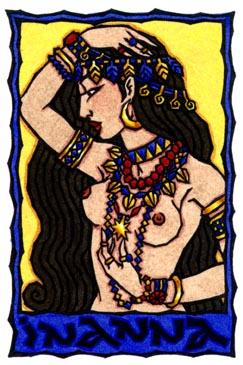
That's me, in the foreground, in front of the Tetrapylon gateway at Aphrodisias, Turkey.
This site has been sacred to the Mother Goddess since 5800 B.C.E. The city was named Aphrodisias, for Aphrodite, in the second century B.C.E., and it remained a pagan stronghold long after Christianity came to the region. The temple to Aphrodite was built in the first century C.E. and much later, during the Byzantine era, converted to a basilica. The ruins at Aphrodisias have been beautifully preserved and reconstructed; the museum there houses the goddess figure who likely stood in the temple. An imposing figure, only suggestively human or female - and thus a far cry from the Venus de Milo or Botticelli's goddess - the statue's gown bears images of the three Graces, winged human figures, Gaia and Uranos, Selene and Helios - the moon goddess and sun god - and Aphrodite herself depicted as a sea goddess, accompanied by a dolphin and triton.
[Come] here to me from Krete to this holy temple
where is your graceful grove
of apple trees and altars smoking
with frankincense.
And in it cold water makes a clear sound through
apple branches and with roses the whole place
is shadowed and down from radiant-shaking leaves
sleep comes dropping.
And in it a horse meadow has come into bloom
with spring flowers and breezes
like honey are blowing
In this place you Kypris taking up
in gold cups delicately
nectar mingled with festivities:
pour.
(Sappho, Fragment 2, translated by Anne Carson)



